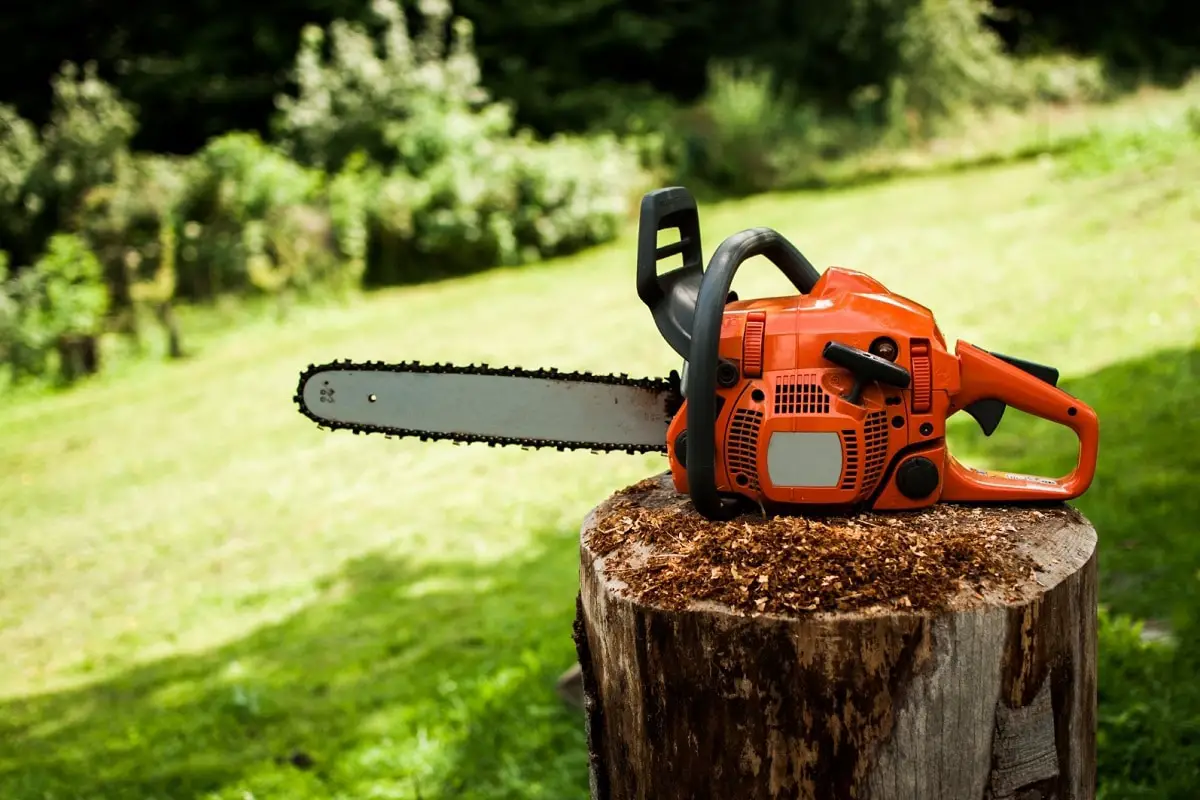Modern chainsaws are a very useful cutting tool that are run by a powerful engine. Their design has developed over time to make chainsaws more efficient and easier to use, however chainsaws have never changed in their primary purpose which is to cut materials quickly.
When Was The 1st Chainsaw Invented?
The first chainsaw was invented around 1783-1785. It was a small handheld device that was powered by cranking a handle and sprocket.
Another, more advanced hand powered chainsaw, called the ‘osteome’ (Greek for osteo (bone) and tome (cut)) was invented in 1830. This was invented for the cutting of bone during medical procedures.
Why Was The Chainsaws Originally Invented?
The chainsaw was originally invented for medical procedures. It was hand cranked with a handle and chain with sharp teeth for cutting bone. It was used for assisting in childbirth to widen the pelvis if the baby’s head could not fit through.
This saw made cutting bone easier and prevented splintering that would happen using other cutting tools. The first chainsaws were very good at removing diseased and dead bone without causing too much damage to surrounding tissue.
The first chainsaw was not made for cutting wood, so these had limited use only in the medical field.
Who Invented the Chainsaw?

The first chainsaw was invented by two Scottish docors, John Aitken and James Jeffray in the late 1700s. Another chainsaw, the ‘osteome’, was invented in 1830 by Bernhard Heine, a German physician.
When Was The Petrol Chainsaw Invented?
More chainsaws were invented over the 19th century that were hand, or human powered. The first known patent for a chainsaw that ran a chain continuously, called the “endless chain saw” was invented in 1905 by Samuel J. Bens.
However, it was not until 1927 that Emil Lerp, a German businessman invented the first petrol powered chainsaw that could be transported. His company, Dolmar Saws, began mass producing it for sale. This was soon being used for professional forestry work. Other manufacturers, including Stihl, soon began producing these (and others) for public use.
The first gas powered chainsaws were heavy (~140 lbs.) and one person alone could not operate them safely.
However, it took until the 1950s for Stihl to produce the first modern gas powered chainsaw that could be carried and operated by one person. This model was called the Stihl BL and required the development of certain aluminum alloys and forged steel.
Highly Rated Gas Chainsaws
Poulan Pro PR4218, 18 in. 42cc 2-Cycle Gas Chainsaw, Case Included
Husqvarna 450R 450 Rancher Gas Chainsaw, Orange
When Was The Electric Chainsaw Invented?
Most people would be surprised to find out that electric chainsaws were invented near the same time as gas powered chainsaws.
In 1926, Stihl, a German company in Stuttgart, developed the first electric powered chainsaw for felling trees and recieved a patent for it. These were quickly applied to forestry work, but its heavy weight (116 lbs.) required two people to operate it.
This was actually the first commercially available chainsaw, but didn’t resemble modern chainsaws due to its large size and weight. It required two people to operate, and was not a huge commercial success.
Why Was The Electric Chainsaw Invented?
The electric chainsaw was invented to provide a person (or two) the ability to cut trees easier than using large hand powered saws.
The electric chainsaw was invented at a time (early 20th century) when electric power tools were becoming more popular. Just like today, chainsaw users wanted a variety of options to choose from and both electric and gas powered chainsaws could be manufactured and purchased.
When Did Chainsaws Get Brakes?
In 1972, a manual chain brake bar was included with Stihl chainsaws which allowed the user to stop the chain from spinning when the bar was pressed. Also, in 1973 the Husqvarna company invented the automatic chain break with stops the chain immediately after kickback. This helped prevent severe facial injuries to chainsaw users.
When Did Chainsaws Stop Being Used For Childbirth?
The modern cesarean section made the use of chainsaws in child birth less necessary. Chainsaws stopped being used for childbirth around the middle of the 20th century.
What Type Of Chain Did The 1st chainsaw have?
The first chainsaw had a chain with sharp teeth that looks much like modern chainsaw chains. No doubt it was farely rudimentary but worked for its intended purpose. The chain hand saw, a fine serrated link chain which cut on the concave side (outer edge).
The first chainsaw chains were of the “scratcher” type and were very similar to conventional hand saw blades. They required the user to apply a lot of hand pressure to make the cut deeper.
The first ‘chipper chain’ that chainsaws use today was invented in the 1940s by Joseph Buford Cox. This was an imitation of the timber beetle’s cutting action which cut side to side, rather than straight ahead. The chipper chain used alternating left / right cutting teeth with a depth guage in front.
To Recap
Modern chainsaws are continuously evolving and new features are added or improved each year. Today, users of chainsaws have many sizes and types of both electric and gas powered chainsaws to choose from. Safety features added to chainsaws over the years have also made them less dangerous to operate.
Regardless, chainsaws remain a dangerous high powered cutting tool that requires utmost care and safety considerations while operating.

